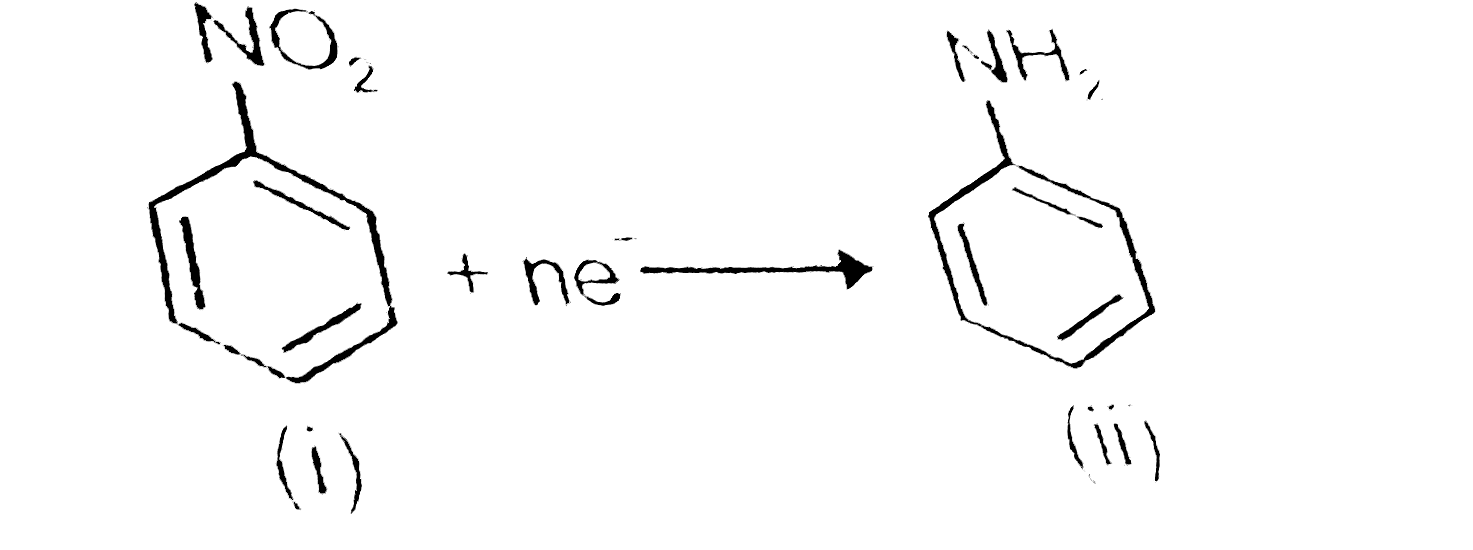Redox reactions are reaction during which reaction during which electron transfer takes place.Here magnesium atom transfers two electrons one each to the two chlorine atoms.
(i)What are the products of this reaction?
(ii)Write the balanced equation for the complete reaction.
(iii)Which element is being oxidized?
(iv)Which element is being reduced?
(v)Write the reduction part of the reaction.
(i)Magnesium atom is converted to ion.Two chlorine atoms are converted to ions so the products are ion and ions.
(ii)
(iii)Mg atom is being oxidised by donating 2 electrons.
(iv) molecule is being reduced by accepting 2 electrons.
(v). It is a reduction in which gain of take place.
Related Playlists
- BOOK - FULL MARKSCHAPTER - TYPES OF CHEMICAL REACTIONSEXERCISE - Additional question solved (HOT questions)11videos
TYPES OF CHEMICAL REACTIONS
- BOOK - FULL MARKSCHAPTER - TYPES OF CHEMICAL REACTIONSEXERCISE - Additional Problems6videos
TYPES OF CHEMICAL REACTIONS
- BOOK - FULL MARKSCHAPTER - TYPES OF CHEMICAL REACTIONSEXERCISE - Additional question solved (Short answer questions:)27videos
TYPES OF CHEMICAL REACTIONS
- BOOK - FULL MARKSCHAPTER - SOLUTIONSEXERCISE - ACTIVITY1videos
SOLUTIONS
Knowledge Check
- Question 1 - Select One
Which one directly transfers electrons to NADP+ during light reaction?
APS IBPS IICCytochromesDPlastocyanin - Question 1 - Select One
Redox is a reaction in which both oxidation and reduction will take place simultaneously . It is obvious that if one substance gives electron there must be another substance to accept these electrons . In some reactions, same substance is reduced as well as oxidised, these reactions are termed as disproportionation reactions.
For calculating equivalent mass in redox reaction change in oxidtaion number is realted to n-factor which is reciprocal of molar ratio.
Which of the following is an example of redox reaction ?A2NO2→N2O4BNH4OH→NH+4+OH−C2NO2+H2O→HNO3+HNO2DN2O5+H2O→2HNO3 - Question 1 - Select One
Redox is a reaction in which both oxidation and reduction will take place simultaneously . It is obvious that if one substance gives electron there must be another substance to accept these electrons . In some reactions, same substance is reduced as well as oxidised, these reactions are termed as disproportionation reactions.
For calculating equivalent mass in redox reaction change in oxidtaion number is realted to n-factor which is reciprocal of molar ratio.
When P reacts with NaOH, the products are PH3 and NaH2PO2 which of the following statement is correct ?AP is oxidised onlyBP is reduced onlyCP is oxidised as well as reducedDP is neither reduced nor oxidised
Similar Questions
A _____ reaction is a reaction in which both oxidation and reduction take place simultaneously.
View SolutionThe reaction in which electrons are transferred from one reactant to another is called a ..........
View Solution(a). What happens when calcium reacts with chlorine? Write an equation for the reaction which takes place.
(b). What happens when magnesium reacts with very dilute nitric acid? Write an equation for the reaction involved.View SolutionIdentity the type of each of the following reactions.
Also write balanced chemical equation for each reaction.
A reaction in which the reaction mixture becomes warm.View SolutionRedox is a reaction in which both oxidation and reduction will take place simultaneously . It is obvious that if one substance gives electron there must be another substance to accept these electrons . In some reactions, same substance is reduced as well as oxidised, these reactions are termed as disproportionation reactions.
For calculating equivalent mass in redox reaction change in oxidtaion number is realted to n-factor which is reciprocal of molar ratio.

For converting one mole of nitrobenzene to aniline how many moles of electrons are transferred ?View SolutionRedox is a reaction in which both oxidation and reduction will take place simultaneously . It is obvious that if one substance gives electron there must be another substance to accept these electrons . In some reactions, same substance is reduced as well as oxidised, these reactions are termed as disproportionation reactions.
For calculating equivalent mass in redox reaction change in oxidtaion number is realted to n-factor which is reciprocal of molar ratio.

For converting one mole of nitrobenzene to aniline how many moles of electrons are transferred ?View SolutionRedox is a reaction in which both oxidation and reduction will take place simultaneously . It is obvious that if one substance gives electron there must be another substance to accept these electrons . In some reactions, same substance is reduced as well as oxidised, these reactions are termed as disproportionation reactions.
For calculating equivalent mass in redox reaction change in oxidtaion number is realted to n-factor which is reciprocal of molar ratio.
Which of the following is an example of redox reaction ?View Solution

